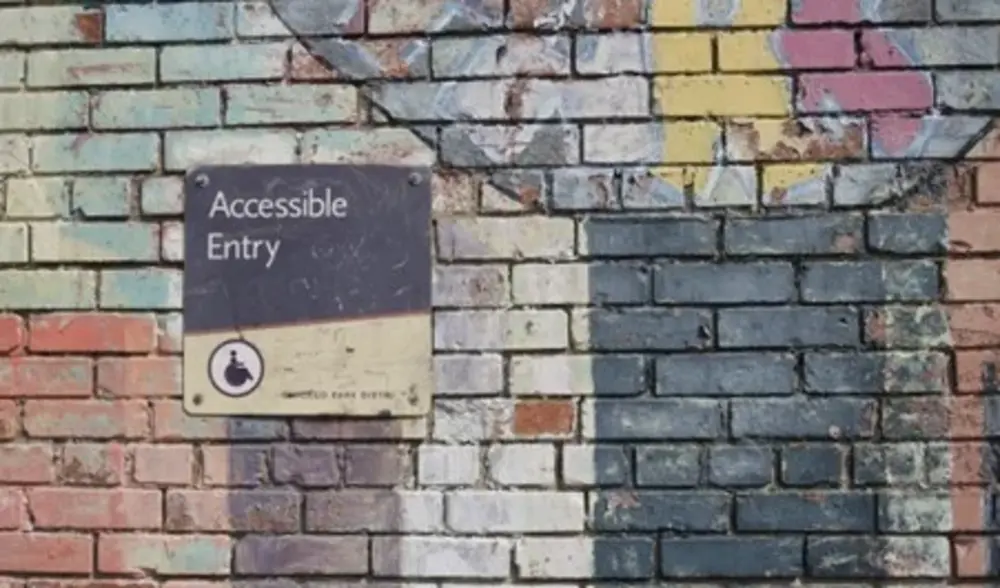Access and Inclusion: Are we talking about the same thing?

Contrary to many metaphors, words do matter. Politicians and governments are constantly sending out press releases, statements and policies. These documents are critical because what they say and how things are written can and do have repercussions. It has only been since 2006 when the United Nation introduced the Convention of the Rights of Person with Disabilities (UNCRPD), that the societies and governments are being held to a higher standard to deliver a higher quality of life for people with disabilities, one that is equal in access, inclusion and opportunity to people without disabilities. But, what do all of these words thrown around mean? And what message are governments trying to evoke when they use ‘access’ and ‘inclusion’? Do governments even have a clear definition of what those two words mean for their populations that have a disability?
As there are still glaring issues around accessibility and inclusion in all communities it makes it necessary to be discussed and resolved. Even Sweden which is in many aspect a front runner in regards to rights for people with disabilities, still has numerous physical environment barriers from cobble stones to step entry ways (Egard 2022). Therefore, it is correct for countries to be focusing on this. However, it is the manner in which accessibility and inclusion are being framed in policies which is important. How policies are framed effects how populations understanding of the issue and how administrations are to resolve the matter (Bacchi 2012).
What does the UN say?
States and governments became formally accountable for their part in creating a society that removed the barriers for citizens with disabilities with the introduction of the UNCRPD. Prior to this many states did not have their own national legislation ensuring the protection of the rights of people with disabilities.
In the UNCRPD, Article 9 specifically covers accessibility. It outlines accessibility as equal access to all areas of life the same as those without disabilities by way of removing barriers to access. Inclusion, however, does not have its own article rather is mentioned in articles referring to education, employment and international cooperation. Inclusion in these areas is highlighted to be the accommodation of an individual’s requirements which can be through the implementation of universal design principles. It must be noted that the usage of inclusion is much more sector specific and lacks, once again, a definition. However, it now appears the meaning of the two words have gotten entangled and their usage has gotten messy.
How are other’s framing this?
It is important to understand how the countries understand the UNCRPD on a national level of which is the national government’s responsibility to implement.
Australia released their current national disability strategy in 2021. However, in the policy, there are no explicit explanations or definition of how the Australian government understands accessibility or inclusion for their context and for the work the Department of Social Services aim to do. In the policy, it is clear the goal is to create an inclusive society in the areas of housing, business, education, health and emergency services. Whereby accessibility is a guiding principle of the document, whereby accessibility is to be implemented in all areas through design principles but also to avoid barriers. Furthermore, there are statement within the policy which have both words used showing that they do in fact have different meaning. Now, this is all well and good to commit to accessibility and inclusion however, this document appears to have gotten the two terms intertwined and confused at one point.
The European Commission similarly released their most current disability strategy in 2021. Once again there is not clear definition of accessibility or inclusion in the document despite its frequent use. Accessibility and inclusion were referenced in very similar life areas such as housing, education, employment etc. However, phrasing in the policy points to actions of inclusion to ensure and secure accessibility. In this way, it is stating the process of inclusion will result in the outcome of an accessible world (European Commission 2021, p.27). This again differs from the Australian and UN descriptions showing that there remain some interpretation discrepancies.
Somethings may be accessible but not inclusive
Semantics can seem a bit redundant and like chancing one’s own tail but there is a tangible difference in these two words. Let’s think about UN description in reference to transport. A public transport system may be accessible to a person who uses a wheelchair by ensuring portable ramps are included on all trains, trams and buses. Here, the person can access and use the transport system however, difficulties may still be faced and additional assistance required. This may not be an inclusive transport system which would have factored in the needs of the person who uses a wheelchair from the design stage onwards.
Where to from here?
It is apparent in many modern disability policies of the need to tackle the explicit and implicit oppression. However, lack of knowledge and resources helps to fuel this disablist oppression (Egard 2022). It makes the average citizen less likely to stand up for accessibility and inclusion if they cannot define it and are unsure what it actually looks like. Therefore, key terms which are frequently used or which are part of long-term national goals should be clearly defined.
Sadly, the world we live in largely inaccessible and non-inclusive. The goals of many governments to rectify this is appropriate but this is not an easy task. However, it is one that can be more successfully achieved if people with disabilities are incorporated into the conversation. People with disabilities are the ones experiencing the barriers and they know what they need to be able to part-take in society. Oliver, an American academic with a disability penned the Social Model of Disability which outlines that the world and its systems have been creates for a person without a disability by often by people without a disability. This is why the barriers exist. As different needs have not been factored into decision making. However, as people with disabilities make up 16% of the global population it is right that they are incorporated into policy and importantly decision making.
Additionally, when repeatedly referencing terms such as accessibility and inclusion clear measurable and outcomes must be identified to ensure governments are being clear and transparent. This also allows citizens to keep their government accountable to what they promise. Australia with its national disability strategy also released targeted action plans which identified actions and indicators but only some had clear measurables.
Ultimately the words we use and how we use them shapes not only our understanding but also how issues are approached. The issue of inaccessibility and non-inclusion in many societies had been systematic and wide-spread thus governments must be taking actions to rectify it. However, key policies that shape long-term actions must be written to include definitions for key and frequent terms, strategies and clear measurables. Through this, citizens can take a more active role in policy and its implementation by ensuring programs are rolled out in a manner that correctly reflects the policy.
References
- Bacchi, C. 2012. “Why Study Problematizations? Making Politics Visible”, Open Journal of Political Science, Vol. 2 No. 1, Pp. 1-8.’ Open Journal of Political Science 2 (1): 1–8.
- Department of Social Services. 2021a. ‘Australia’s Disability Strategy 2021-2031’.
- ———. 2021b. ‘Community Attitudes Targeted Action Plan’.
- Egard, H. 2022. ‘Accessible Enough? Legitimising Half-Measures If Accessibility in Swedish Urban Environment’. In Accessibility Denied. Understanding Inaccessibility and Everyday Resistance to Inclusion for People with Disabilities, 13–25. Oxon: Routledge.
- European Commission. 2021. ‘Union of Equality: Strategy for the Rights of Persons with Disabilities 2021-2030’.
- United Nations. 2006. Convention on the Rights of Persons with Disabilities.
- World Health Organization. 2023. ‘Disability’. 7 March 2023. www.who.int/news-room/fact-sheets/detail/disability-and-health.
About the Author

Alyssa McIntyre is a MPP student at the Willy Brandt School of Public Policy and the Student Assistant Editor of the Bulletin. Alyssa’s area of interest is disability related policy which stems from her previous experience in the disability services sector in Australia.
~ The views represented in this blog post do not necessarily represent those of the Brandt School. ~